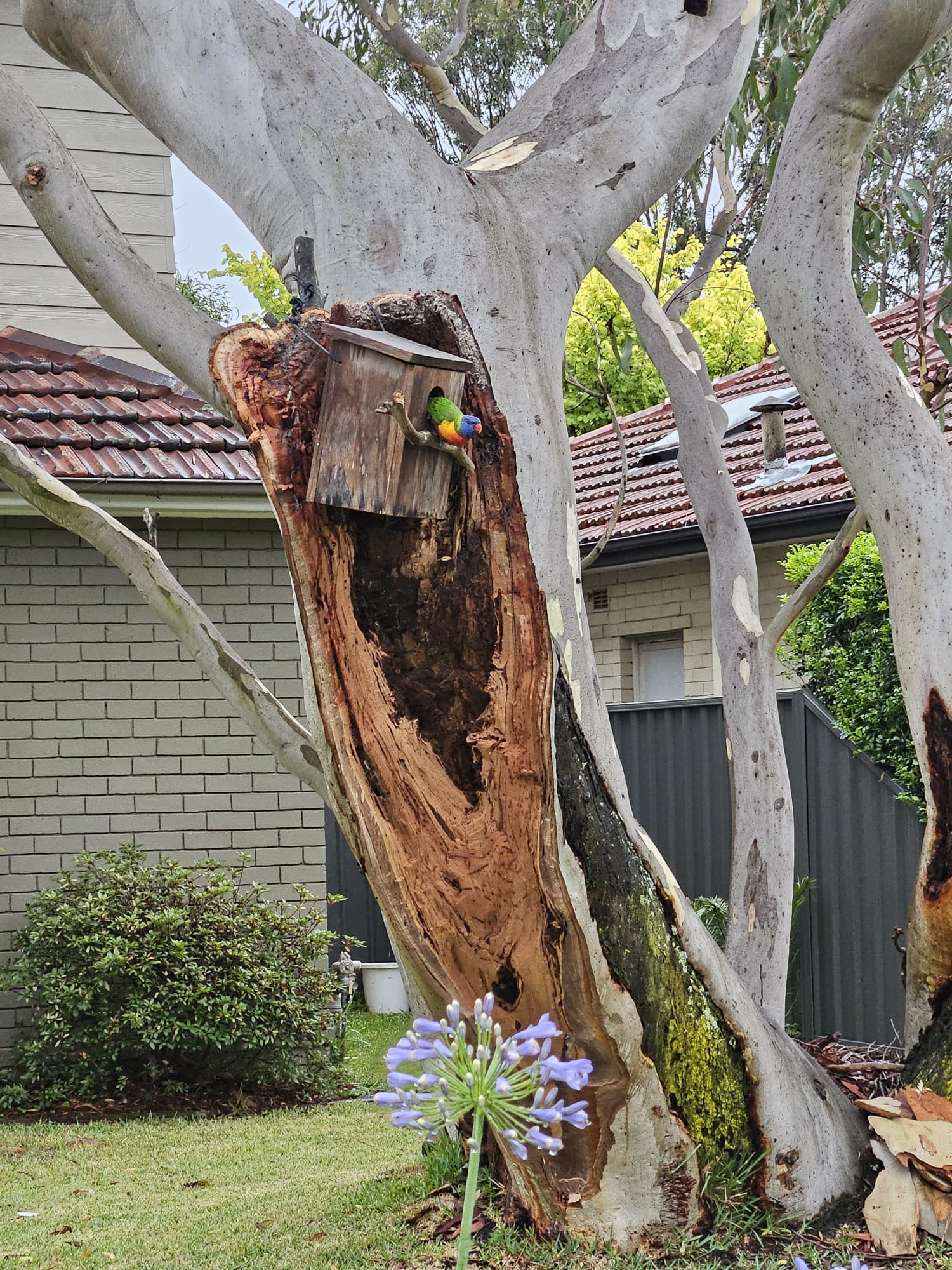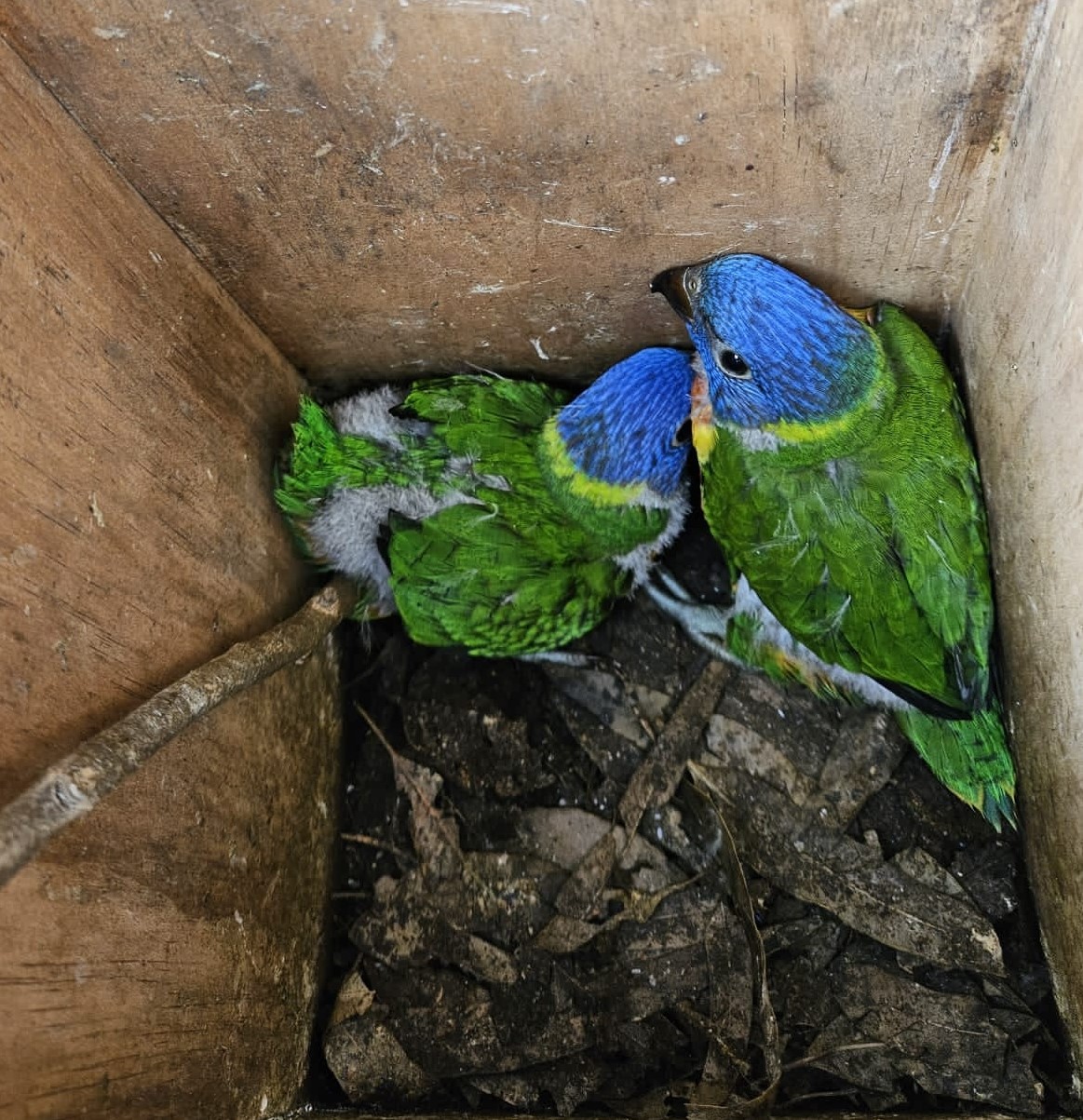
A safe haven for displaced wildlife
Tuesday, February 6, 2024
A few days before Christmas, an arborist was called to remove a tree-trunk that had broken off in a recent storm. Just before removal he noted two tiny lorikeet chicks in the hollow of the broken trunk. WIRES was called for help.
Whilst it was getting dark, WIRES volunteer Cathy asked her husband to quickly craft a nest box. Together they drove to the site, hung it as high as possible on the remaining tree stump and placed the displaced lorikeet chicks safely inside.
As the chicks were so young Cathy had to return to the nesting box every few hours to feed them. On the last feed of the second day, she climbed the ladder and came face to face with an adult lorikeet. The parents had returned and were feeding their own chicks!
Cathy returned to the nesting box for eight more days and confirmed the little family were now thriving in their new home.

Other ways you can help native animals in your own backyard
- Plant natives! These are not only a natural food source for wildlife, they’re also lower maintenance than most non-native alternatives.
- If you have a high fence, place posts to help wildlife escape easily.
- If you're putting out water, please place it up high and safe to protect wildlife from local dogs and cats whilst they're taking a drink.
- Try to keep cats indoors at all times and keep your dog inside at night so nocturnal wildlife can eat and explore in peace.
- If you have a fence or netting, please make it wildlife friendly. Barbed wire can cause terrible pain and as the story below highlights, nets in both rural and suburban areas can entrap unsuspecting wildlife.
Other Articles
Grampian bushfires devastation
Interview with WIRES Training and Development
Orphaned Jess now ready for release
Our Wildlife Ambulance fleet is growing!
What a difference WIRES care makes
WIRES provides urgent triage for Flying Fox emergency
Displaced koala receives urgent care
National Parks and Wildlife Service warns of dangers of inappropriate feeding
WIRES funded platypus centre provides a lifeline of hope to declining species
